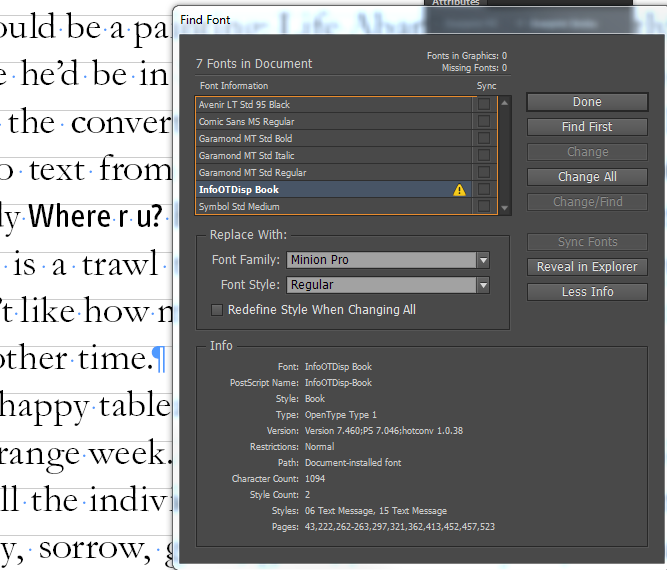

For this demonstration, we'll work in a New Document.
#ADOBE INDESIGN CC 2015 SWAPPING OUT MISSING FONTS HOW TO#
If it is a seven, replace it with a standard seven on your keyboard. When it comes to how to change the font color, InDesign gives us several options. For each of the characters that were giving you and issue, you will do a find/replace. Select a sample of the missing glyphs and run through your fonts until you find one that displays them properly.Ģ. There maybe an easier way to tackle this but this is how I do it.ġ.

If you find that the font you need to use still does not have the glyphs and you still have those squares, you may need to do some find and replaces. This dialog will allow you to replace missing fonts with something suitable. It appears that you may have carried some formatting over from the previous document.įirst ensure that you have a suitable replacement font. It gives you more flexibility in posting and it is more likely to be answered.

In the future, you may want to consider posting questions in the forum section. These are the font cache files which you may want to delete. If you do a search like I did, you’ll see a large number of files with the extension *.lst. Thomas’ post is to tell you how to correctly delete these files. You can freely delete font cache files because the operating system or the Adobe font mechanism automatically generates new ones when it needs them. But that would require a separate article!) (This can also be caused by a corrupted font as well. The symptoms of corruption might be a font which displays incorrectly. It’s rather a rare event, but because these files may be updated and modified, it’s possible that they, like all files on your computer, may get corrupted. Your operating system and Adobe’s own font technology (used in all the Adobe Creative Suite applications) create cache files to make font display faster. It turns out that these are font cache files. What are these mysterious files which appear in odd places in your computer? For example, when I did a search this morning on my computer, here’s a partial list of what I found: I was reminded of this because of a post this week by Adobe’s resident font guru, Thomas Phinney, on his blog. One of these pieces of knowledge is that if you’re having font problems (fonts which don’t display correctly, for example), a possible solution is to delete the AdobeFnt files on your computer. Those who have worked with fonts for a long time have developed a lore about them, and how to handle them successfully.


 0 kommentar(er)
0 kommentar(er)
